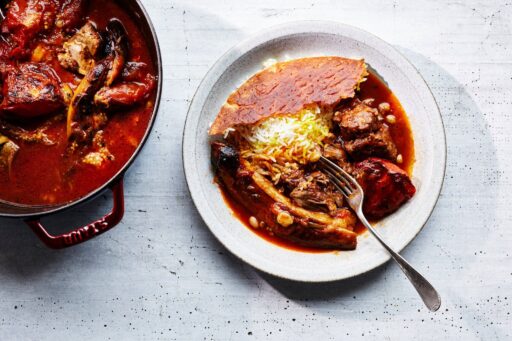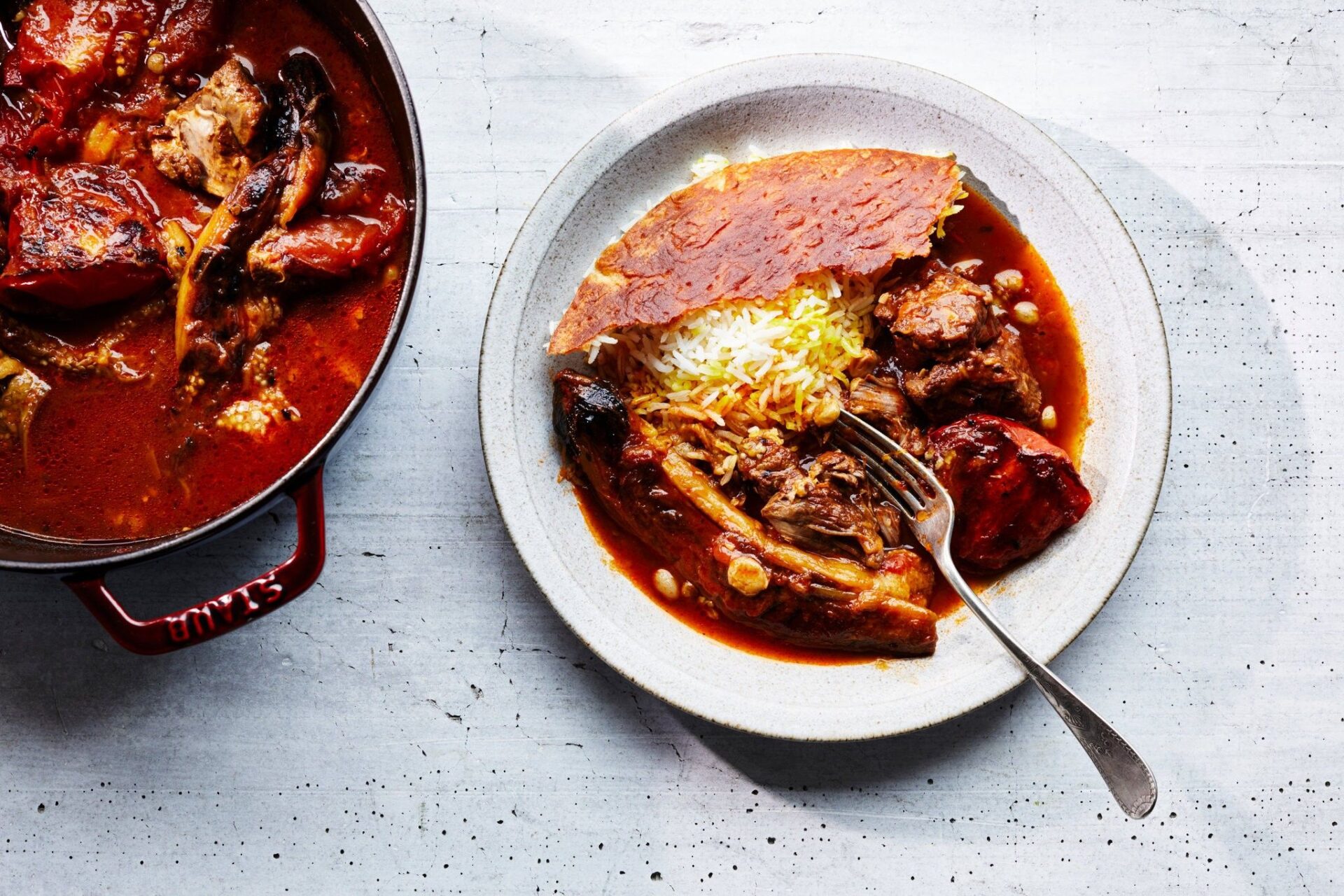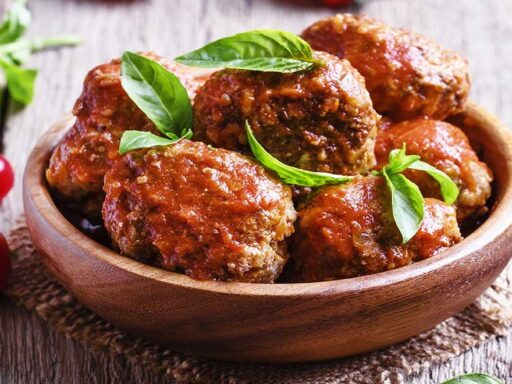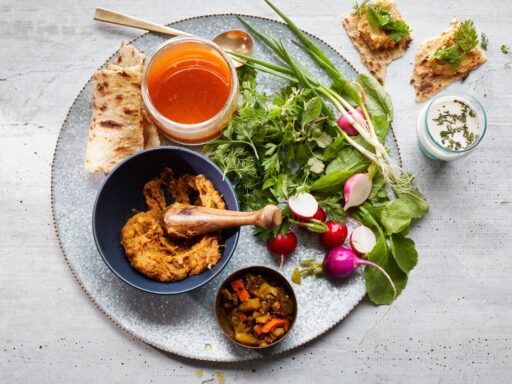Iranian cuisine is renowned for its diverse flavors, rich history, and the intricate blend of spices and ingredients that create its unique dishes. Among these culinary delights, Khoresh-e Bademjan, or eggplant stew, holds a special place. This traditional dish is beloved for its hearty and comforting qualities, combining the deep flavors of eggplant, tomatoes, and tender meat. In this comprehensive article, we will explore the history, ingredients, preparation methods, and cultural significance of Khoresh-e Bademjan, offering a detailed guide for those looking to understand and savor this iconic Iranian dish.
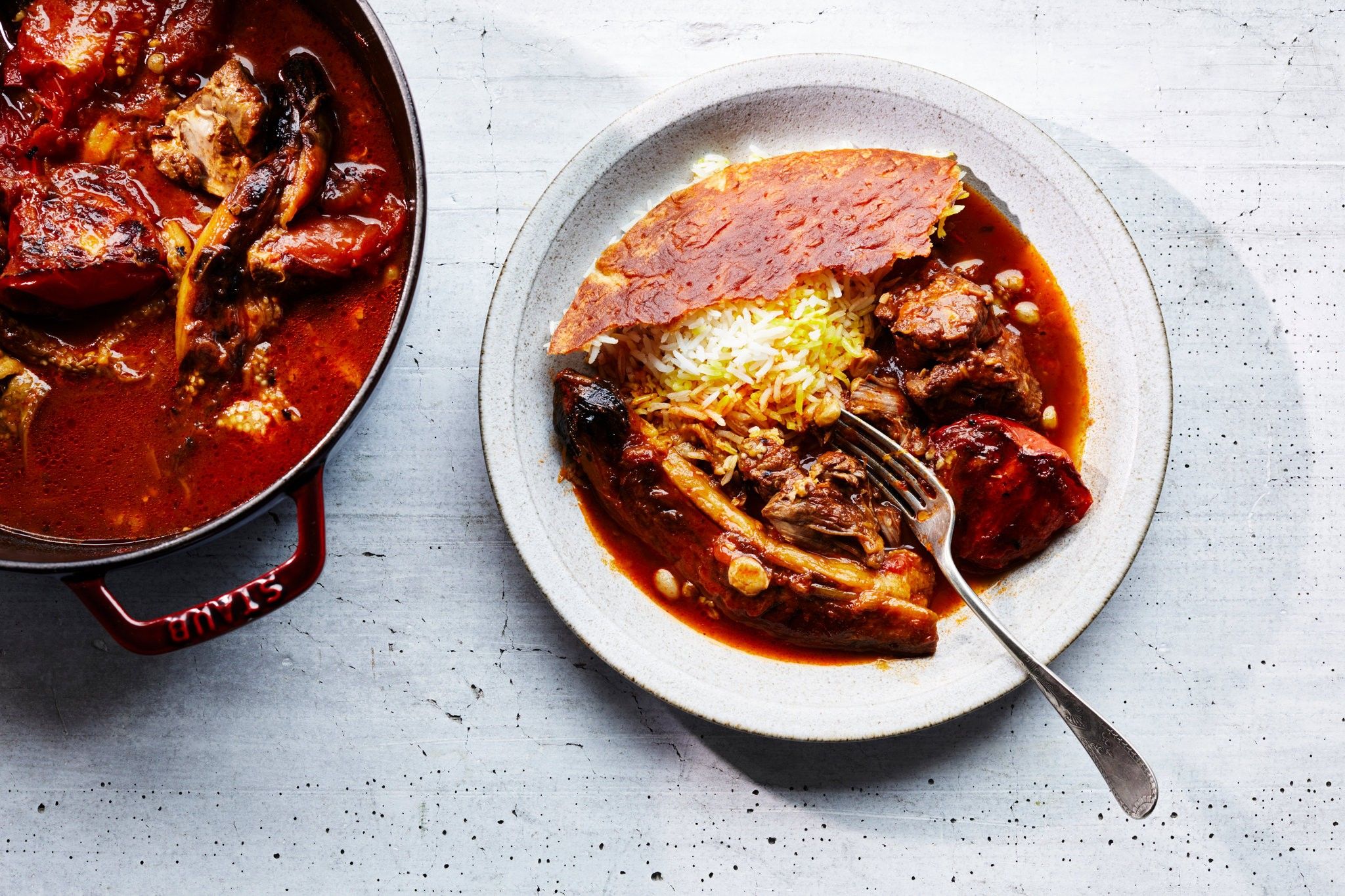
Introduction to Khoresh-e Bademjan
What is Khoresh-e Bademjan?
Khoresh-e Bademjan is a classic Iranian stew that features eggplant (bademjan in Persian) as its primary ingredient, often accompanied by tomatoes, onions, and meat such as lamb or beef. This stew is known for its rich, tangy flavor, achieved through the use of souring agents like dried limes (limoo amani) or pomegranate paste. It is typically served over steamed rice, making it a staple in Iranian households.
The Significance of Stews in Iranian Cuisine
Stews, or “khoresh,” are a fundamental component of Iranian cuisine. They are typically slow-cooked, allowing the flavors to meld together, creating a comforting and deeply satisfying meal. Khoresh-e Bademjan is one of many khoresh dishes, each showcasing the country’s culinary diversity and regional variations.
The History and Cultural Significance of Khoresh-e Bademjan
Origins of Khoresh-e Bademjan
The exact origins of Khoresh-e Bademjan are difficult to pinpoint, but it is believed to have been a part of Persian cuisine for centuries. The use of eggplants in Iranian cooking dates back to ancient times, with the vegetable being native to the region. Over time, the recipe for Khoresh-e Bademjan has evolved, incorporating various regional influences and ingredient adaptations.
Cultural Importance
In Iran, food is not just sustenance; it is an integral part of social and cultural identity. Khoresh-e Bademjan, like many traditional dishes, is often prepared for family gatherings, special occasions, and festivals. It represents the hospitality and warmth of Iranian culture, where sharing a meal is a cherished experience.
Ingredients of Khoresh-e Bademjan
Key Components
- Eggplants: The star ingredient, eggplants provide a creamy texture and absorb the flavors of the stew. They are typically fried or baked before being added to the stew.
- Meat: Lamb or beef is commonly used, adding a rich, savory depth to the dish. Chicken can also be used for a lighter variation.
- Tomatoes: Fresh or canned tomatoes are used to create the base of the stew, contributing to its tangy flavor.
- Onions: Onions are sautéed to form the aromatic foundation of the stew.
- Garlic: Adds a subtle but essential flavor.
- Turmeric: This spice is used for its color and earthy flavor.
- Dried Limes (Limoo Amani): These are added for their unique sourness, a distinctive characteristic of many Iranian stews.
- Pomegranate Paste or Molasses: Sometimes used to enhance the tanginess and add a hint of sweetness.
- Salt and Pepper: Essential for seasoning the stew.
Optional Ingredients
- Potatoes: Some variations include potatoes for added texture and substance.
- Saffron: This luxurious spice can be used to add a unique flavor and golden hue to the dish.
- Herbs: Fresh parsley or cilantro for garnish.
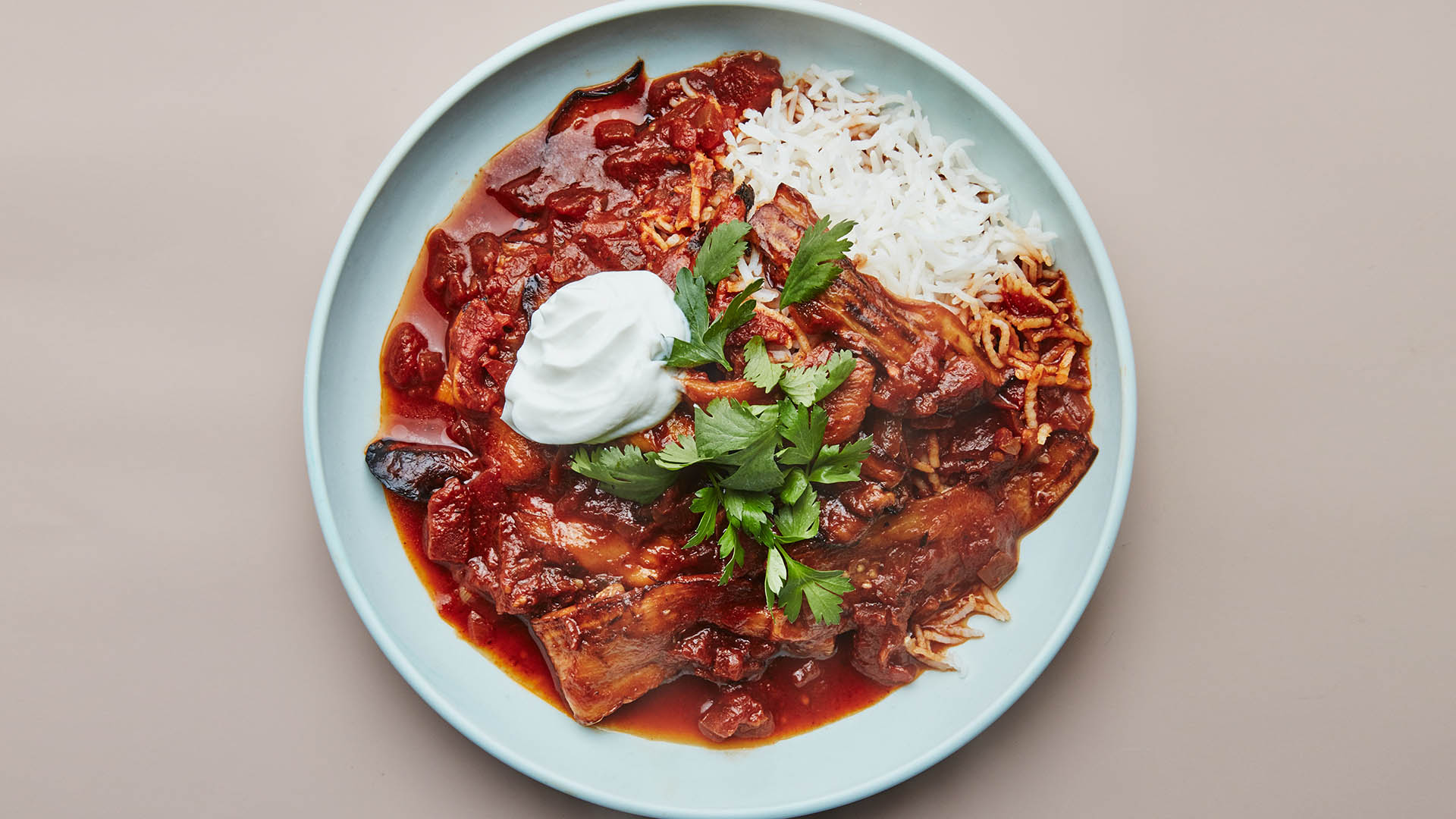
Preparation of Khoresh-e Bademjan
Step-by-Step Guide
Preparing the Eggplants
- Slice the Eggplants: Cut the eggplants into thick slices or chunks, depending on your preference.
- Salt the Eggplants: Sprinkle salt over the eggplant slices and let them sit for about 30 minutes. This helps to draw out moisture and reduce bitterness.
- Rinse and Dry: Rinse the salted eggplants and pat them dry with a paper towel.
- Fry or Bake: Fry the eggplant slices in oil until golden brown or bake them in the oven for a healthier alternative. Set aside.
Cooking the Meat and Onions
- Sauté the Onions: In a large pot, heat some oil and sauté the chopped onions until golden.
- Add the Meat: Add the meat to the pot and brown it on all sides.
- Spice it Up: Add turmeric, salt, and pepper to the meat and onions, stirring well to coat.
Building the Stew
- Tomatoes and Garlic: Add chopped tomatoes and garlic to the pot, stirring to combine.
- Add Water or Broth: Pour in enough water or broth to cover the meat. Bring to a boil, then reduce to a simmer.
- Add Eggplants: Add the fried or baked eggplant slices to the pot.
- Include Dried Limes: Pierce the dried limes with a fork and add them to the stew.
- Simmer: Cover and simmer the stew on low heat for 1-2 hours, allowing the flavors to meld together.
Final Touches
- Adjust Seasoning: Taste and adjust the seasoning with salt and pepper if needed.
- Add Pomegranate Paste: If using, stir in pomegranate paste or molasses for added tanginess.
- Garnish: Garnish with fresh herbs like parsley or cilantro before serving.
Serving Suggestions
Khoresh-e Bademjan is traditionally served over chelow, which is Iranian steamed rice. The fluffy, fragrant rice complements the rich flavors of the stew, making it a perfect pairing. You can also serve it with a side of mast-o khiar (yogurt and cucumber dip) and sabzi khordan (a platter of fresh herbs and vegetables).
Variations of Khoresh-e Bademjan
Regional Differences
Different regions in Iran have their own variations of Khoresh-e Bademjan, influenced by local ingredients and culinary traditions. For example, in the northern regions, cooks might use fresh herbs more liberally, while in the south, the use of tangy and sour elements like tamarind might be more pronounced.
Vegetarian Khoresh-e Bademjan
For those who prefer a vegetarian version, Khoresh-e Bademjan can be made without meat. In this variation, additional vegetables such as zucchini, bell peppers, or potatoes can be added to provide texture and substance.
Healthier Alternatives
To make a healthier version of Khoresh-e Bademjan, consider baking the eggplants instead of frying them. Using lean cuts of meat or opting for chicken can also reduce the fat content without compromising the flavor.
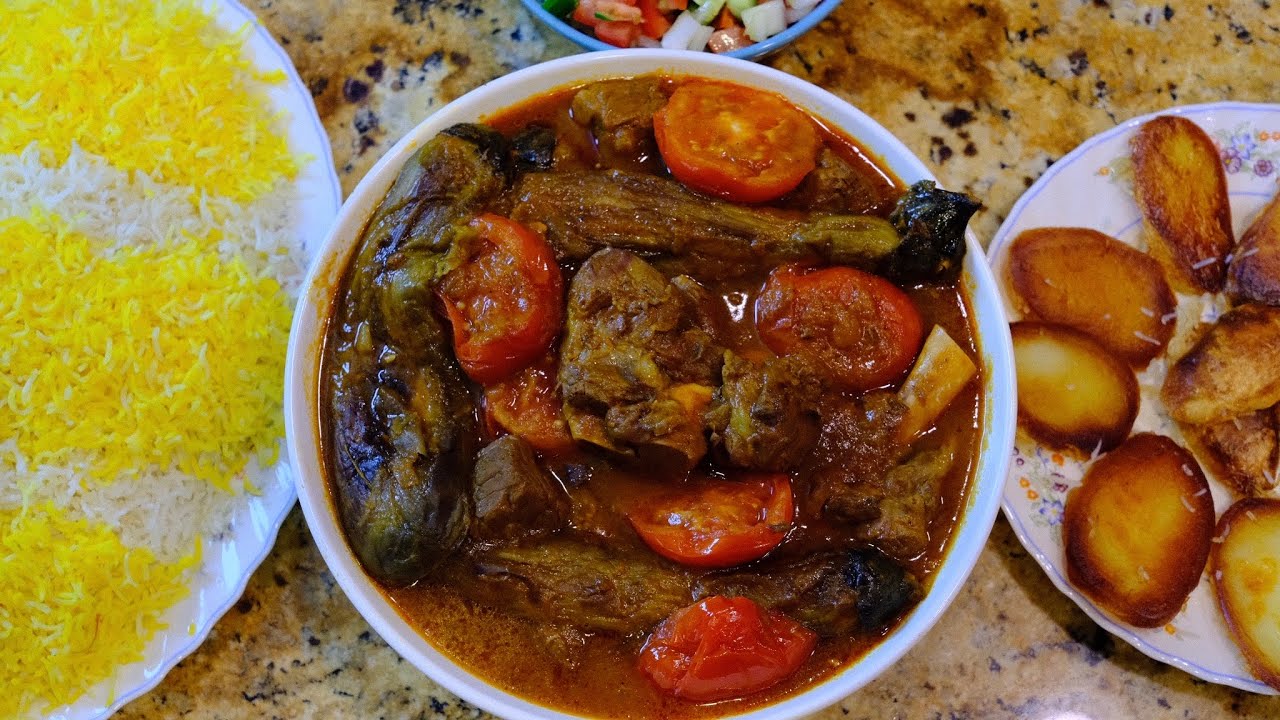
The Nutritional Value of Khoresh-e Bademjan
Health Benefits
Khoresh-e Bademjan is not only delicious but also nutritious. Eggplants are low in calories and high in fiber, vitamins, and antioxidants. The stew also provides protein from the meat and various vitamins and minerals from the other vegetables and spices used.
Nutritional Breakdown
A typical serving of Khoresh-e Bademjan contains:
- Calories: Varies depending on the meat and cooking method, but generally ranges from 300-400 calories per serving.
- Protein: 20-30 grams, depending on the meat used.
- Fat: 15-25 grams, which can be reduced by baking the eggplants.
- Carbohydrates: 20-30 grams, primarily from the vegetables and any added potatoes.
The Role of Khoresh-e Bademjan in Iranian Culture
Family and Social Gatherings
Khoresh-e Bademjan is often prepared for family gatherings and social occasions. It is a dish that brings people together, embodying the hospitality and warmth of Iranian culture. Sharing a meal of Khoresh-e Bademjan is an experience that goes beyond just eating; it is about connection, tradition, and the joy of communal dining.
Festivals and Celebrations
During Iranian festivals and celebrations, Khoresh-e Bademjan is a popular dish. It is commonly featured during Nowruz (Persian New Year) and other significant cultural events, highlighting its importance in Iranian culinary traditions.
Representation in Iranian Cuisine
Khoresh-e Bademjan represents the essence of Iranian cuisine: a harmonious blend of flavors, a focus on fresh and wholesome ingredients, and a deep respect for culinary heritage. It showcases the skill and creativity of Iranian cooks, who transform simple ingredients into a dish that is rich in flavor and history.
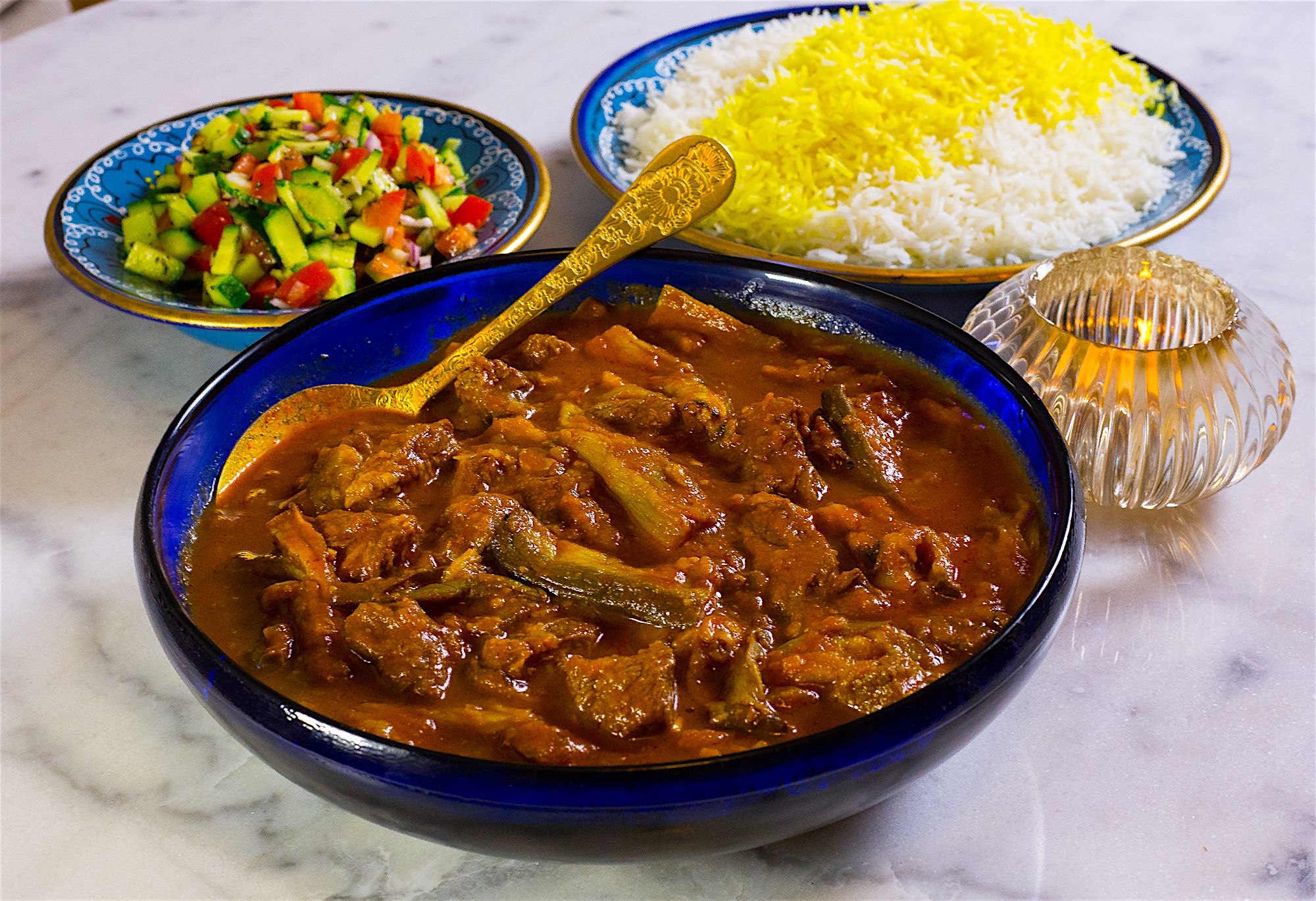
Conclusion
Khoresh-e Bademjan is more than just a stew; it is a symbol of Iranian culinary artistry and cultural heritage. This classic dish, with its rich flavors and comforting qualities, captures the essence of Iranian cuisine. Whether enjoyed during a festive celebration or a simple family meal, Khoresh-e Bademjan offers a taste of Iran’s rich culinary traditions.
By exploring the history, ingredients, preparation methods, and cultural significance of Khoresh-e Bademjan, we gain a deeper appreciation for this iconic dish. Whether you are an experienced cook or a curious foodie, preparing and savoring Khoresh-e Bademjan is a journey into the heart of Iranian cuisine. Embrace the flavors, enjoy the process, and share this delicious stew with your loved ones.
Final Thoughts
Khoresh-e Bademjan, with its rich history and delightful flavors, stands as a testament to the culinary heritage of Iran. As you embark on the journey of making and tasting this traditional dish, you connect with the culture, traditions, and stories that have been passed down through generations. Let this guide serve as your companion in discovering the joys of Iranian cuisine, one delicious bite at a time.

